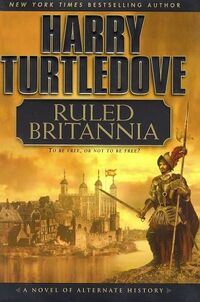| Anglo-Spanish War | |||||||||
|---|---|---|---|---|---|---|---|---|---|
|
|||||||||
| Belligerents | |||||||||
| |||||||||
| Commanders and leaders | |||||||||
|
|
||||||||
The Anglo-Spanish War was a war fought intermittently between England and Spain from 1585-1604. War was never declared, and most of the battles were fought at sea. While there were several causes for the war, including the religious and economic rivalry between England and Spain, this conflict also arose from the ongoing Dutch War of Independence, also known as the Eighty Years' War.
Since the English Reformation, the Hapsburgs had seen themselves as protectors of disenfranchised English and Irish Catholics. After the ascendancy of Queen Elizabeth and the reestablishment of Protestantism as the official state religion of England, Spanish King Philip II, the widower of Elizabeth's Catholic predecessor Mary, had an antagonistic relationship with his sister-in-law. Meanwhile, Philip was attempting to suppress a Protestant rebellion in the Netherlands led by William the Silent. A year after William's death, Elizabeth supported the Dutch rebels in the Anglo-Dutch Alliance, and in 1585, Spain treated it as a declaration of war.
An English army under Sir Robert Dudley traveled to the Netherlands to support William the Silent. The English were decisively defeated by a Spanish army led by Alessandro Farnese, Duke of Parma, leaving England vulnerable if an invading army could land on Britain.
In 1588, Philip II ordered the Spanish Armada to attempt such an invasion. It was met with defeat in the English Channel. However, England was not able to capitalize on its own victories. In 1589, the English Armada failed in its multi-prong mission of torching the Spanish Navy, capturing Spanish treasure fleet and expelling Spain from Portugal. As the decade went on, Spanish and English navies did battle on the high seas, with England often losing. Deadlock set in at the turn of the century. It was brought to an end with the Treaty of London, negotiated in 1604 between representatives of the new king of Spain, Philip III, and the new king of England, James I. England and Spain agreed to cease their military interventions in the Spanish Netherlands and Ireland, respectively, and the English ended high seas privateering.
Anglo-Spanish War in Crosstime Traffic
Crosstime Traffic was aware of an alternate in which the Anglo-Spanish War ended when the Spanish Armada conquered England in 1588. Spain went on to create an empire that bordered Russia. Footage taken in this alternate was shown to Jeremy Solters and his fellow students in his history class.[1]
Anglo-Spanish War in Ruled Britannia
The Anglo-Spanish War was temporarily ended in 1588 when the Spanish Armada bested its English adversaries and conquered the country.
Prior to the invasion itself, the Armada defeated the Royal Navy and advanced to the Netherlands, where the Duke of Parma's army boarded the ships. The Armada then landed Parma's forces in England, where Parma once again defeated an English army. England was conquered. Queen Elizabeth was deposed and imprisoned in the Tower of London. Most of England's Protestant aristocrats were killed or exiled, with the notable exception of William Cecil. King Philip II's daughter Isabella and son-in-law Albert were installed as Queen and King of England. They restored Catholicism as the state religion. Catholic Ireland became a free and sovereign nation, no longer an English feudal colony. A multinational force of Spanish, English, and Irish soldiers under the command of Spanish general Don Diego Flores de Valdés occupied England and enforced the Hapsburgs' rule.
Upon the death of Philip II in 1598 and the ascension of the far less capable Philip III as King of Spain, Robert Cecil led a revolt of English Protestants planned by his father. The Spanish were expelled and Elizabeth was restored to the throne. The English government began plotting retribution against its enemies.
References
- ↑ Gunpowder Empire, chapter 1.
| |||||
| |||||||||||||||||||
